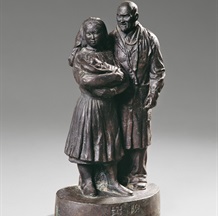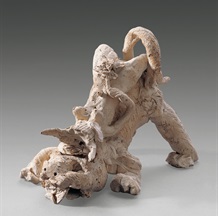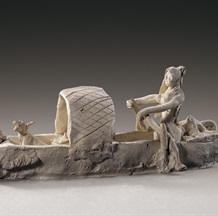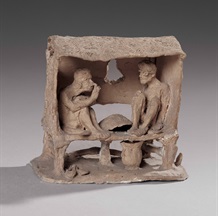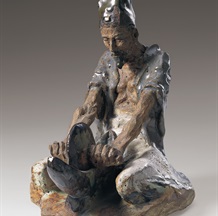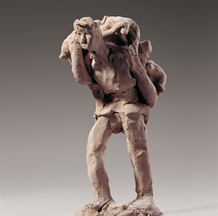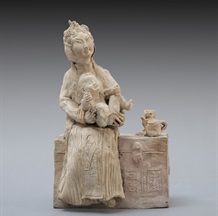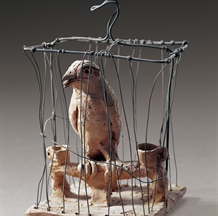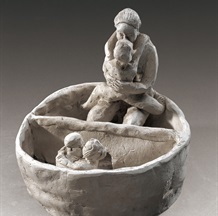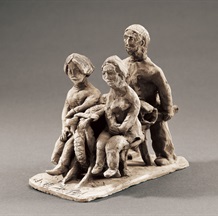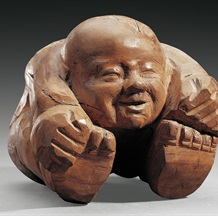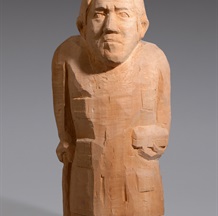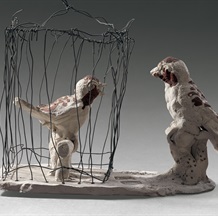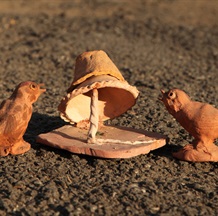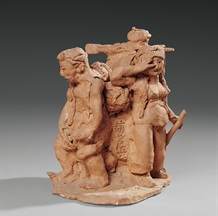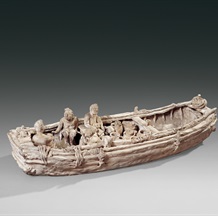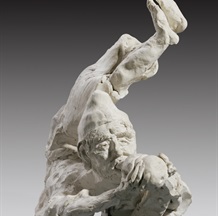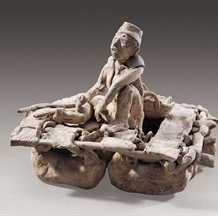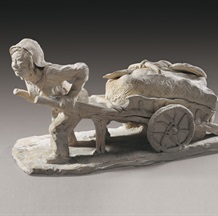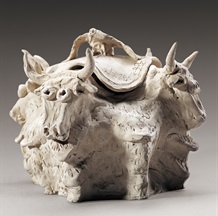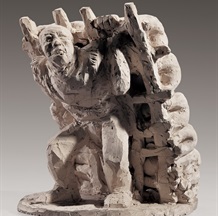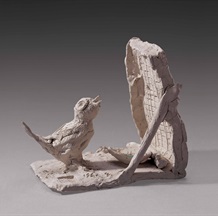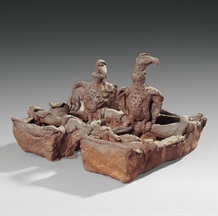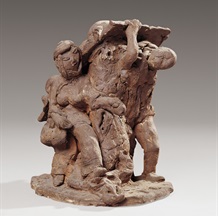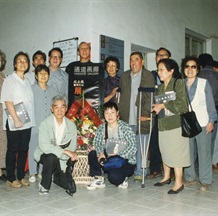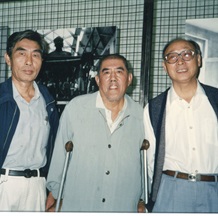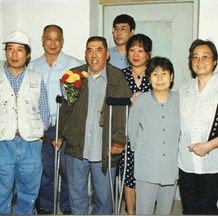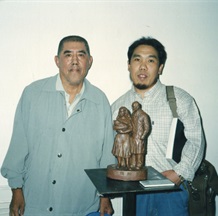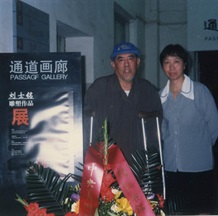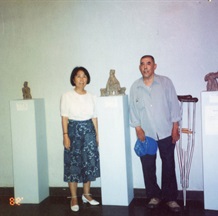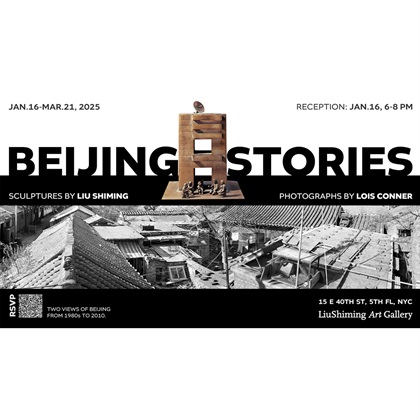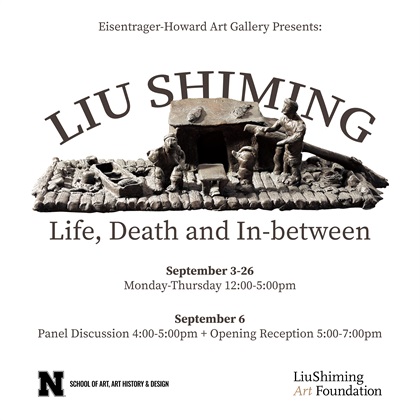
The opening ceremony


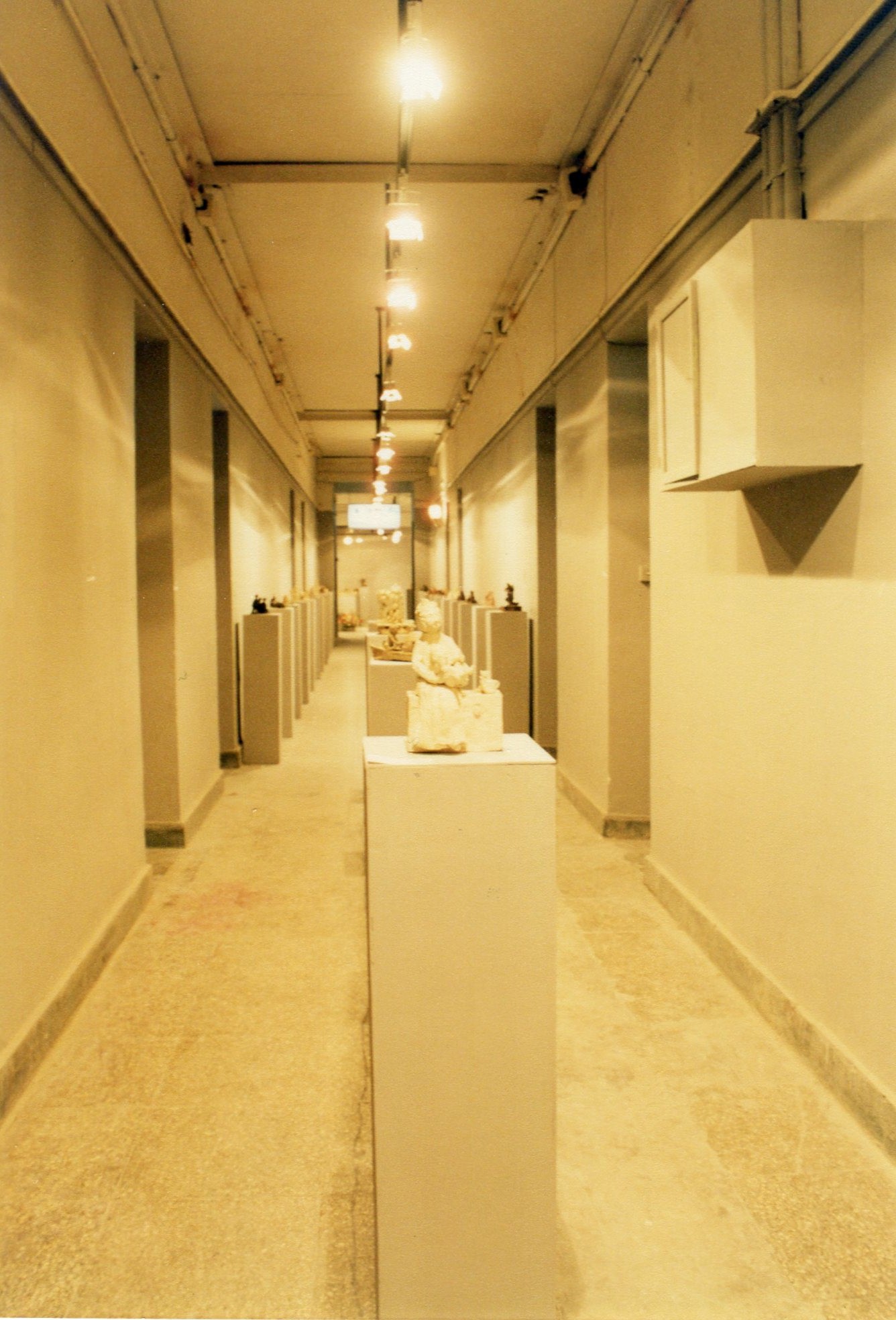
Exhibition View
“Liu Shiming is an honest artist. He is engaged in art not for reputation, or for profit, and never caters to popular trends of thought and fashion. Faithful to his eyes and his mind, he expresses his own feelings and emotions and has devoted himself fully to sculpture for decades. Thanks to the guidance he received from famous artists such as Hua Tianyou and Wang Linyi, he is well versed in the language of sculpture. In addition, the strict training and atmosphere of the Academy has also provided him with many benefits and inspiration. However, “he does not lose his individual personality because of his diligent study. While displaying his individuality, he also pays attention to showing a civilized touch in his expression,” said Prof. Shao Dazhen, a famous art historian, in the preface to the Catalogue of Liu Shiming’s Works, “By transcending the main trend of the contemporary sculpture, Liu Shiming can use the traditional national techniques of the ancient pottery sculpture in our country to blaze a new artistic trail, which is undoubtedly wise and creative. We applaud him for the remarkable results of his honest efforts and diligent exploration. I believe that the exhibition of the pottery sculptures by him and publication of his works will surelyarouse strong repercussions in the circle of sculpture and even in the art world at large.”Preface
By Liu Shiming
The Gatha says: As sculpture takes shape in fire, my love for loess goes through trials.
Tired of secular affairs, I turn to Sutra for answers.
1. Love
Mr.Wang Linyi, my teacher, used to tell me many times that he hoped to visit my solo sculpture exhibition. Unfortunately, he passed away in the summer of 1997. Before his death, Mr. Wang repeatedly pushed open the door of the atelier of the Sculpture Department before entering the house and sitting down. Then he said to me, “Your little sculptures can be used to hold an exhibition. Please keep them well and don’t lose them.” Hearing his remark, I only smiled without giving a direct reply. I thought that I had nothing to do but let things go with the flow. In spite of living a bumpy and vagrant life, I had a great passion for life, loving the customs along the Yellow River and on the Loess Plateau as well as in the caves in the Shaanxi and Shanxi provinces. Fascinated, I finally came to the Central Plains to experience the love and other feelings of the real working people there for ten years, overtly expressing their feelings and love. The men there were rude, beating and scolding their wives and children. The women wore black clothes, black pants and black shoes, their faces covered with dust and their heads with black towels. Men and women from the countryside ran around here and there in the wind-blown sand for business or to wander from place to place to earn a living. On winter days, adult men and women in black cotton-padded clothes carrying their children, knapsacks stringed instruments, gongs, and drums, got on the iron-stuffed train, and traveled along the Longhai Road, forming a flow of people rolling to the west, to the south of Xi’an and then to Hankou. In the spring and summertime, they would return home for farming, just as the local farmers did. But when I looked at their stocky and sturdy images, I found these women were so real and lovely with big and beautiful eyes, thick and slender waists, walking like the wind blowing past. Sometimes I saw them breastfeeding their babies. Sometimes, I saw the willing efforts made by them when they were standing in the courtyard with their backs naked and their heavy breasts exposed before their chest, they were energetically kneading dough to make noodles or pancakes for their husbands who, squatting down on the ground, were eating and drinking, waving their cattail leaf fans and feeling at ease. Meanwhile, the children were playing sports in the yard, frightening chickens and dogs away. Most of these women were thirty to fifty and their thinking was kind of conservative. With their hair coiled, a few strands of hair hanging down to their ears. In spite of their plump and strong bodies and reddish black faces, they looked very pretty. They were fond of wearing tight cloth shoes with small embroidered flowers. Their needlework was really nice and the stitches were dense. I once asked them to make me two pairs of cloth socks and a small jacket, and they even embroidered a little tiger on the small pocket of the jacket. They also used white thread to put a 卐-shaped pattern on the insoles, which was very delicate.
The living images of these men and women are deeply etched in my memory. They are also the inexhaustible resources of my creation. The small pottery sculptures I make are not in a particular form, and I use all kinds of clay. Yet I can't help but want to desperately and quickly grab the images in my memory, and mold them out as fast as I can. The most important are not the complete details of the sculptures, but the lively representation of the characters in my memory. Following this creed, I stayed in the electric kiln studio for fifteen years (1980-1994). Regardless of bitter cold or torrid heat, I sat silently every day, meditating on how to mold these scenes and images with clay strips. Only when I endured such loneliness could I fully dedicate myself to recording these scenes and images with clay strips. They were the pursuits in my youth, which made me willingly abandon all I possessed, and these pursuits have lasted even to this day. Just as Lu Zhishen’s lyric reads, “Wearing straw sandals and carrying a broken alms bowl, To wander where I will.” So I carved a little wooden statue of myself.
2. Fate
It is very difficult for a person to be born and live in this mortal world. To get such a chance is like a thread running through the hole of a needle hanging in the air, which is hardly possible if not impossible. The reason why I love the sculptures is that when I was a child, I saw the land-and-water drawings that were hung when monks chanted scriptures, the paper figures and horses at funerals, and the big and small ghosts wielding three-section cudgels that could rotate when pushed forward, as well as the paper figures made by beautiful girls and old women. When I was a teenager, I went to the Dongyue Temple to watch the clay statuesof deities and those of Emperor Dongyue and his empress. In the main hall were two big ghosts with two big bags on their shoulders. The bags were covered with many holes, with many children’s heads exposed which was very impressive. And I could also see the big iron abacus on the door, whose beads were movable. Besides, there were four shocking big characters reading , “你可来了(Here you come)”. It is this abacus and this sentence that lay the foundation for my creative conception in my life. Such sentences as “你可来了(Here you come)” and “我来了(Here I come)” were characterized by adopting a national technique of shocking creation in a figurative language. What I liked best was to go to the Lama Temple in Beihai Park to visit the Temple of Heavenly Kings, to the Minor West Heaven to visit Buddha statues, and to the Pure Land of the Minor West Heaven to visit Arhats in the cave. Since few people visited the cave, I walked back and forth among the Arhats, and when I reach the top of the temple, I caught sight of the plaque with the inscription of four characters reading “极乐世界(Pure Land).” Now, a feeling of emptiness welled up inside me. I remember that in 1943, I bought a bronze Buddha statue about 20 cm in height at a stall at the White Dagoba Temple for little money. It was a bronze statue of Yamāntaka with consort of a naked man and a naked woman embracing each other in Lamaism. Each of them was depicted as a Minotaur with six arms. I valued it greatly as if I had discovered a precious treasure, and made it one of my collections. I stared at the bronze statue characterized by fine workmanship, which was elaboration and accuracy in proportion and structure. At that time, I didn’t understand the art of sculpture, but I felt that this statue in my hand was something that could be sensed, and something real. This statue was my first teacher in mannequin sculptures. After a long time, unknowingly, it was missing. Even today, I still feel sorry for it when I think of it. Just as things gather and disperse, people experience grief at partings and joy with reunions. Behind all these lies fate, which is something we may come by with luck, but not by searching for. From 1980 to 1994, I didn’t know how many little gadgets were made by me and how many pieces of sculpture were fired by me in the electric kiln studio of the Sculpture Department. According to my estimation, the total number of the gadgets and pieces of sculpture is over 500. The number of such artistic works, if calculated on the basis of 50 every year, is a little larger. During the 15 years, these sculptures were made before being fired immediately. Some were taken away by those who were fond of them. Some were lost during exhibitions, and still some were stolen by those who loved them. Besides, some were made and sent to the students in the class for further studies and to the graduates. Once in a while, they prepared the clay themselves and brought it to me before asking me to change it into artistic works and fire the works into souvenirs for them. To date, I have still kept around 200 to 250 sculptures of different sizes. Most of these works are unglazed and fired at 1100℃-1180℃. It took me 6 hours to fire them every time. Sometimes, many finished sculptures were ruined in the process of being fired. I found that my favorite sculptures were unluckily broken in half or even into pieces as soon as they began to be fired in the kiln. Only then did I realize that pottery is the art of fire, which cannot be controlled by man’s will. Sometimes, even if a sculpture did not break into pieces, it was likely to be covered with cracks. At such a time, I had nothing to do but glue the cracks. Frankly speaking, most of my sculptures have some defects in the process of being fired. Whenever the temperature in the kiln was on the point of reaching 300℃I waited in an agony of suspense for fear that a sound would be heard from the kiln because the sound indicated that something was wrong with the sculptures in the kiln. When the temperature reached 900℃-1000℃, I could see the golden and translucent pottery sculptures in the kiln holes, which was extremely beautiful. The beauty of heat control and the joy of imminent success made me forget all the hardships I had experienced. The key to success is that the furnace fire should be controlled to heat up slowly so that the crystal water in the clay evaporates. After this key operation is solved, there is nothing to worry about. My inner resources rest on the little sculptures instead of on the surface of sculpture modelling. The exhibition to be held in the Sculpture Department this time can not only serve the purpose of teaching but also gratify Mr. Wang’s wish. Meanwhile, this Catalogue is dedicated to my Alma mater and the circle of sculpture. The exhibition to be held also means the fulfillment of my long-cherished wish with the support of my son Liu Wei and the faculty members of the Sculpture Department. For this, my mind was once filled with a myriad of thoughts, keeping me awake at night.
Here I’d like to extend my thanks to everyone.
Written in Beijing in April 1998


